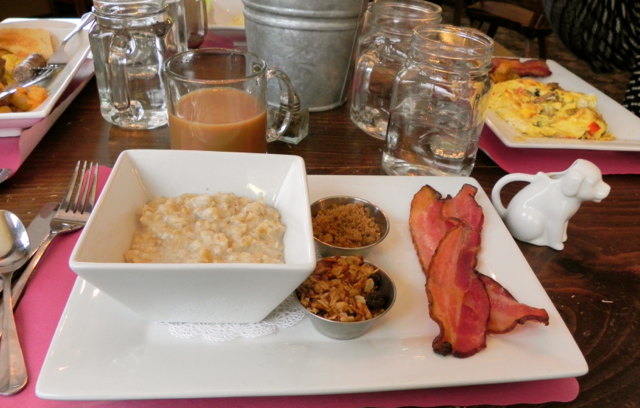When you spend time doing winter sports, being prepared and well fed will make your family’s time outside more comfortable and fun. Here’s how you can make that happen.
Stay Hydrated
During the winter, staying hydrated is important to feel your best, perform at your peak, and stay healthy and safe. Dehydration is common in the winter for two big reasons:
- Cold temperatures blunt the thirst mechanism, so you may not “think to drink.”
- You may delay drinking to delay urinating, as winter clothing is cumbersome and facilities not always convenient.
Dehydration is dangerous as it can lead to feeling tired and fatigued – and to even more severe consequences. Watch your children to see whether they are shivering. This is the body’s way of warming itself. Shivering uses the energy stored in muscles to warm the body, rather than for your activity, so shivering can lead to fatigue. Children can quickly get chilled, fatigued and hungry. Stick with warm beverages. They will help you hydrate, and are a treat for the whole family. Unless you are hot, cold fluids may give you the chills rather than cool you off.
Eat Up for Energy
If you plan on being outside for more than an hour, snacks of 100 – 200 calories every hour can help refuel muscles and keep your family going. Without regular refueling, you may find your family members are more fatigued and chilled as the day goes on.
Here’s what you should pack for your day:
- Fluids – An insulated thermos will keep drinks, such as caffeine-free tea or cocoa, nice and warm. It’s important to keep your water bottle and other beverages from freezing. Water freezes from the top down, so put well-sealed bottles in a pack upside down. Flexible water bottles may also be carried in an inside pocket of your jacket, using body heat to keep the water warm.
- Snacks – Crunchy foods tend to work best, as soft or chewy snacks often freeze at low temperatures. Whole grain crackers with nut butters or cheese, pretzels, granola bars, trail mix, Fig Newtons, and dried fruit are all great high-energy snacks. It’s always good to pack more than you think you’ll need!
- Pack a snack for the ride home for “recovery.” This will start the refueling process for tired muscles and take the edge off of hunger. Look for foods that contain a combination of fluids, protein and carbohydrates. Chocolate milk, or peanut butter sandwiches with 100% fruit juice, or a yogurt smoothie all fit the bill.
Start Tomorrow Today
If you are planning back-to-back days of skiing and snowboarding, or other activities that will last more than an hour, you need to recharge energy stores. Have a snack in the evening to be sure your family starts of the day with a “full battery” to prevent a mid-morning “bonk.”
The proper gear, smart eating, and staying hydrated will help you and your kids stay warm and enjoy Vermont’s winter wonderland.
 Guest blogger, Cathy McIsaac, RD, is a registered dietitian at The University of Vermont Medical Center. She enjoys both Alpine and Nordic skiing and tries to get outside as often as she can. Her favorite moment was spending her birthday in fresh powder at Smuggler’s Notch last year.
Guest blogger, Cathy McIsaac, RD, is a registered dietitian at The University of Vermont Medical Center. She enjoys both Alpine and Nordic skiing and tries to get outside as often as she can. Her favorite moment was spending her birthday in fresh powder at Smuggler’s Notch last year.




We always bring a big thermos of New England Clam Chowder, plenty of our own hot chocolate mix and hot cups, and a little chocolate for extra energy. Our first trip of the year is next weekend. Getting excited thinking about it.
Keeping hydrated with an inflatable water bottle! Important and easy to accomplish when you can keep the water right in your jacket!
My favorite is the snacks! Keeping an extra snack on hand is useful in keeping energy for the mountain.
A mini flask with fireball to warm up the adults and protein bars for the kids!